The Ballista is Trek’s latest flagship aero road helmet, used by the likes of Mads Pedersen and Lizzie Deignan of the Lidl-Trek WorldTour team.
The spiritual successor to the Bontrager Ballista, Trek says this latest model improves on the formula to the tune of 10.1 watts at 45kph.
With an aggressively aerodynamic shape that’s somewhat akin to a time-trial helmet with the bottom half lopped off, the Trek Ballista makes its intentions clear.
In use, the Ballista impresses on most fonts, offering excellent comfort and good ventilation on all but the hottest days.
Trek Ballista MIPS helmet aerodynamic development
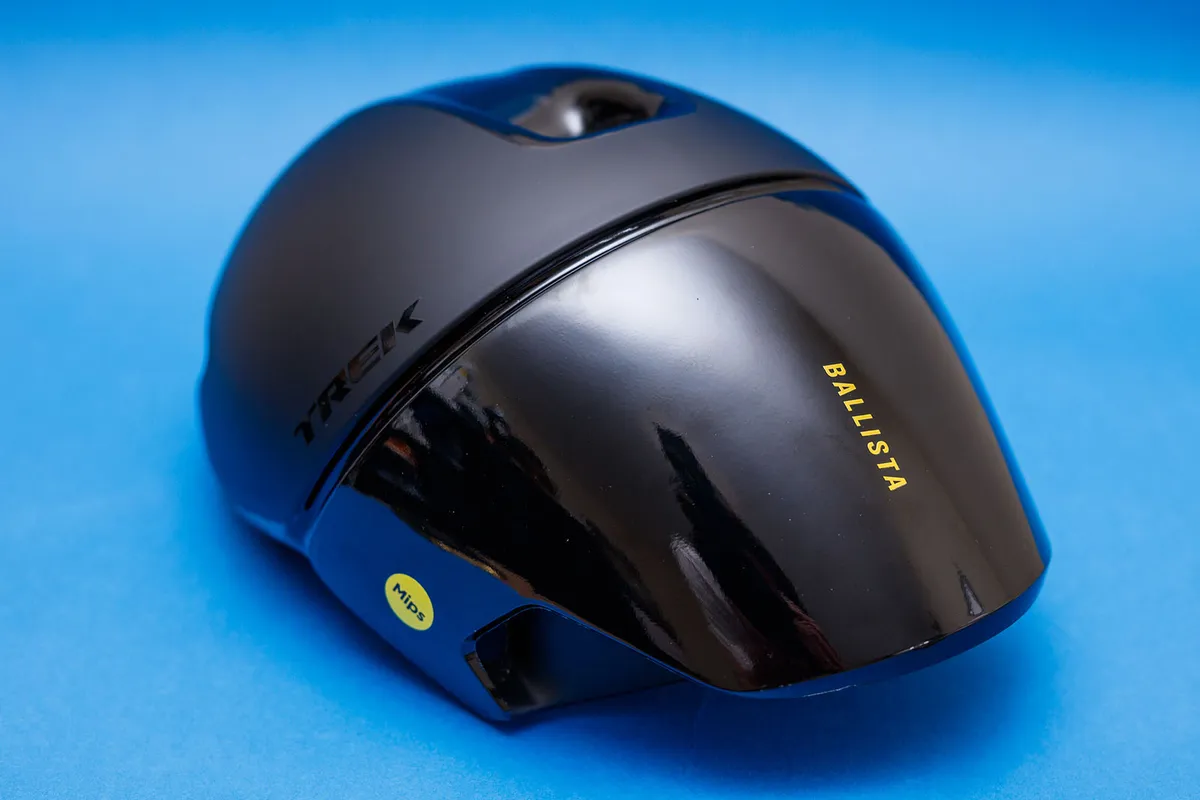
Trek says the key design goals behind the new Ballista came from pro rider feedback requesting it be lighter, better ventilated and more aerodynamic – everything you’d expect.
Using CFD (computational fluid dynamics) modelling and multiple trips to the wind tunnel, Trek eventually settled on an elongated, truncated-teardrop form, which is said to be aerodynamically “robust” to changes in a rider’s head position.
This means it isn’t simply optimised around one riding position, but has instead been tested to be slippery across multiple head angles.
As is common with aero road helmets, venting is relatively minimal, with just four prominent inlets on the front.
Some of the largest aero gains are said to have come from the ‘air trip’ trough, which runs horizontally across the rear third of the helmet.
This channel is claimed to function similarly to the dimples on a golf ball, tripping the airflow from laminar (smooth) to turbulent (rough) at an optimal point, helping it stay attached for longer and lowering drag.
Trek Ballista MIPS helmet specification
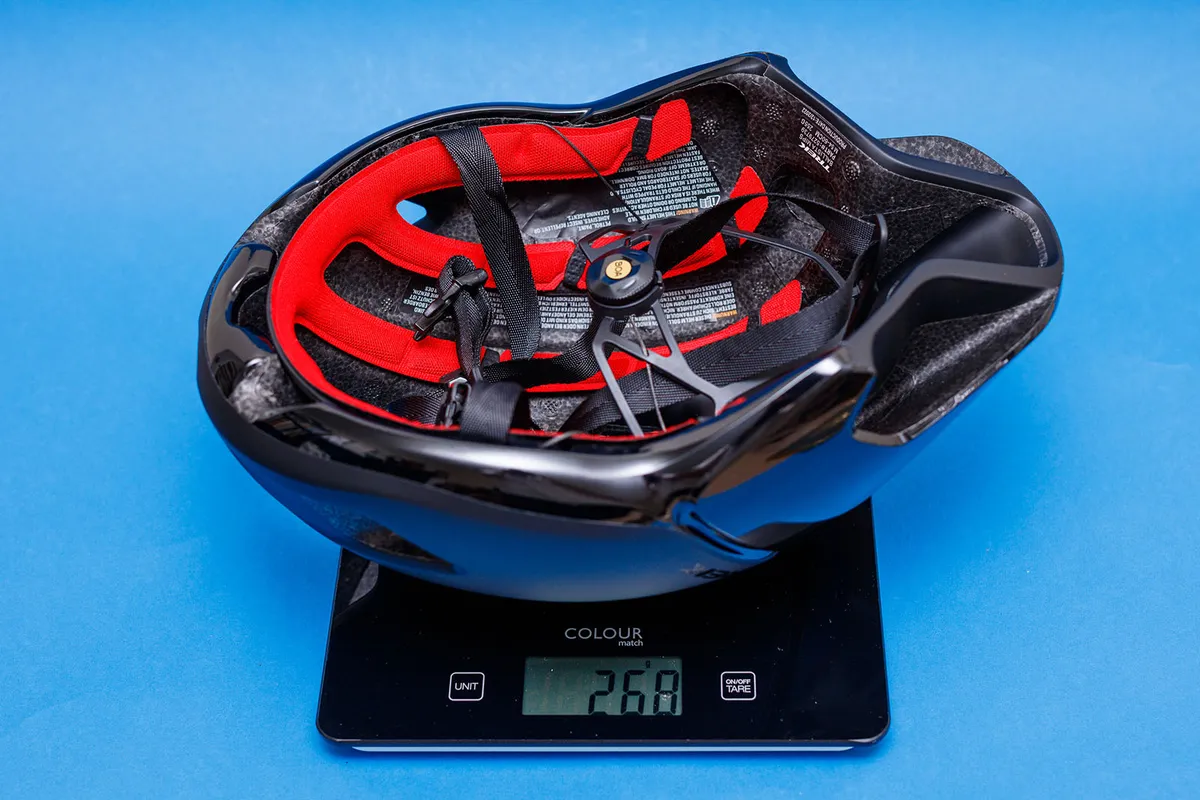
On our scales, a black, European-spec, size-medium Trek Ballista weighs 268g. That’s 13g heavier than the claimed weight of 255g.
The Ballista costs £229.99/$299.99/€299.99.
While there are lighter and cheaper bike helmets available, the Ballista’s weight and price are competitive with the best aero road helmets.
A size-medium Specialized S-Works Evade 3 (£275/$300/€330), for example, weighs 272g, while a Giro Eclipse Spherical (£240/$250/€260) weighs 277g in the same size.
At 258g for a size-medium, the Kask Utopia Y (£245/$300/€275) is a little lighter. This may be explained by its lack of a MIPS liner, though (Kask doesn’t use MIPS technology in its helmets, instead preferring to do its own in-house rotational impact testing, according to its internally developed WG11 protocol).
For its part, Trek specs a MIPS Air liner, which is incorporated into the minimalist red padding.
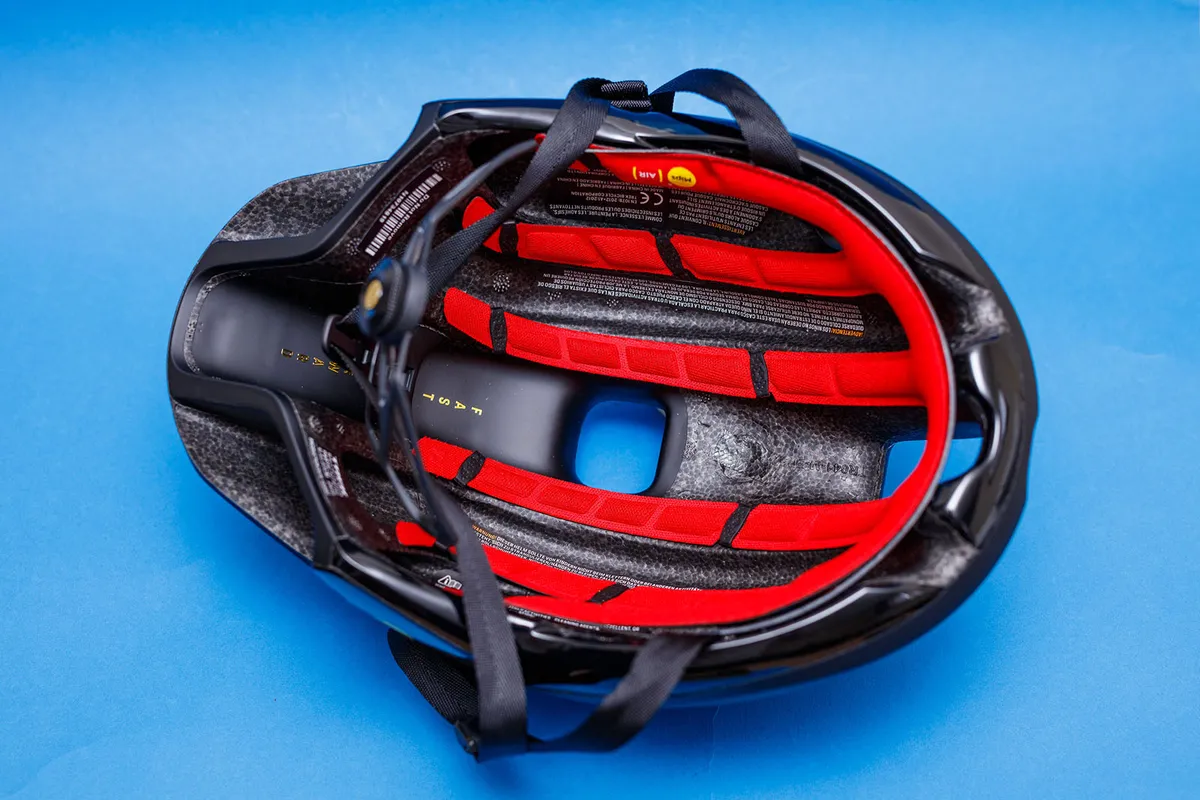
The Ballista has also received a five-star safety rating from Virginia Tech’s Helmet Lab.
At the rear of the helmet, the Ballista uses a Boa dial and lace system to adjust the cradle tension.
As with Boa systems on some of the best cycling shoes, this operates with a satisfying click and enables fine tension adjustments.
The lightly knurled edges enable it to be operated easily with sweaty fingers or thick winter cycling gloves on.
Trek Ballista MIPS helmet performance
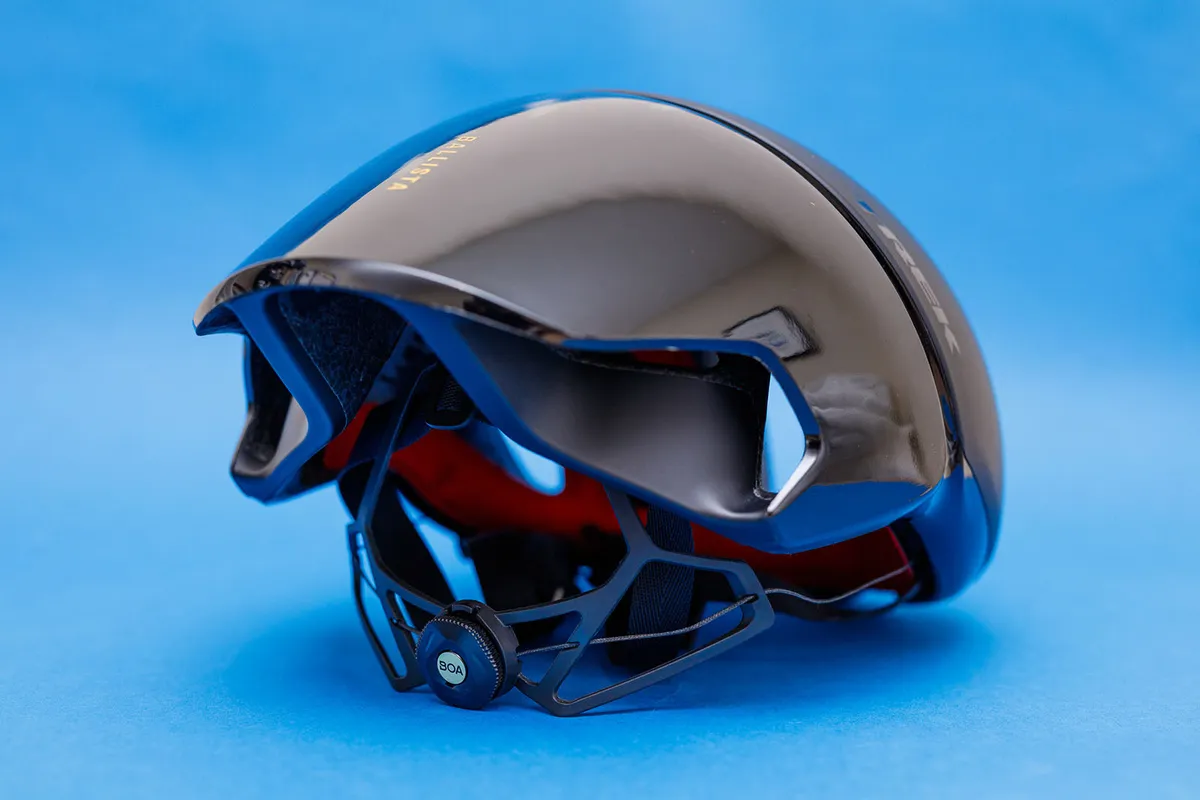
In use, the Trek Ballista impresses with a comfortable and easy-to-adjust fit.
Determining whether the Ballista’s shape and ‘air trip’ channel are aerodynamically effective is beyond the scope of this review, sadly.
However, when we pitted a vented helmet against an aerodynamic equivalent at the Silverstone Sports Engineering Hub wind tunnel earlier this year, as part of our best-value aero upgrades test, the difference was 7.56 watts at 35kph.
Given the power required to overcome aerodynamic drag is proportional to the cube of speed, Trek’s claimed saving of 10.1 watts at 45kph doesn’t feel unrealistic given the original Ballista was launched more than eight years ago.
Beyond that, though, I’m happy to report the Ballista doesn’t get in the way of your ride.
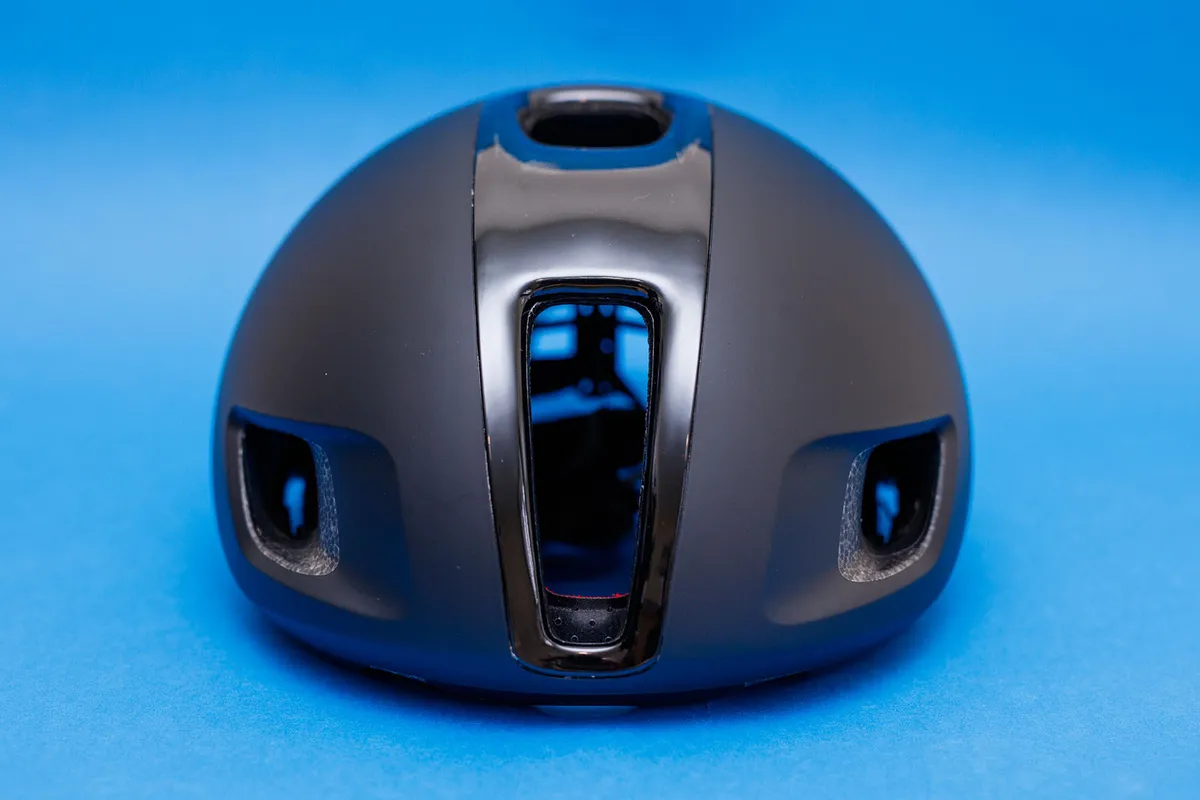
Ventilation is good, especially at higher speeds, where the cooling effect from airflow through the large central vent is distinct.
Predictably, cooling suffers more at lower speeds, and I found it would begin to feel slightly stuffy when climbing in temperatures around the mid-20s (°C).
This is a common trait in many aero road helmets, however, and in this case it didn't feel uncomfortable – just noticeable compared to a more vented helmet.
To compare it to one of its closest rivals, the Specialized Evade 3, my impression is that the Specialized aero lid is marginally cooler.
Granted, they were tested on different rides across different days, but I noticed the presence of the Ballista more on hot days than I did the Evade 3.
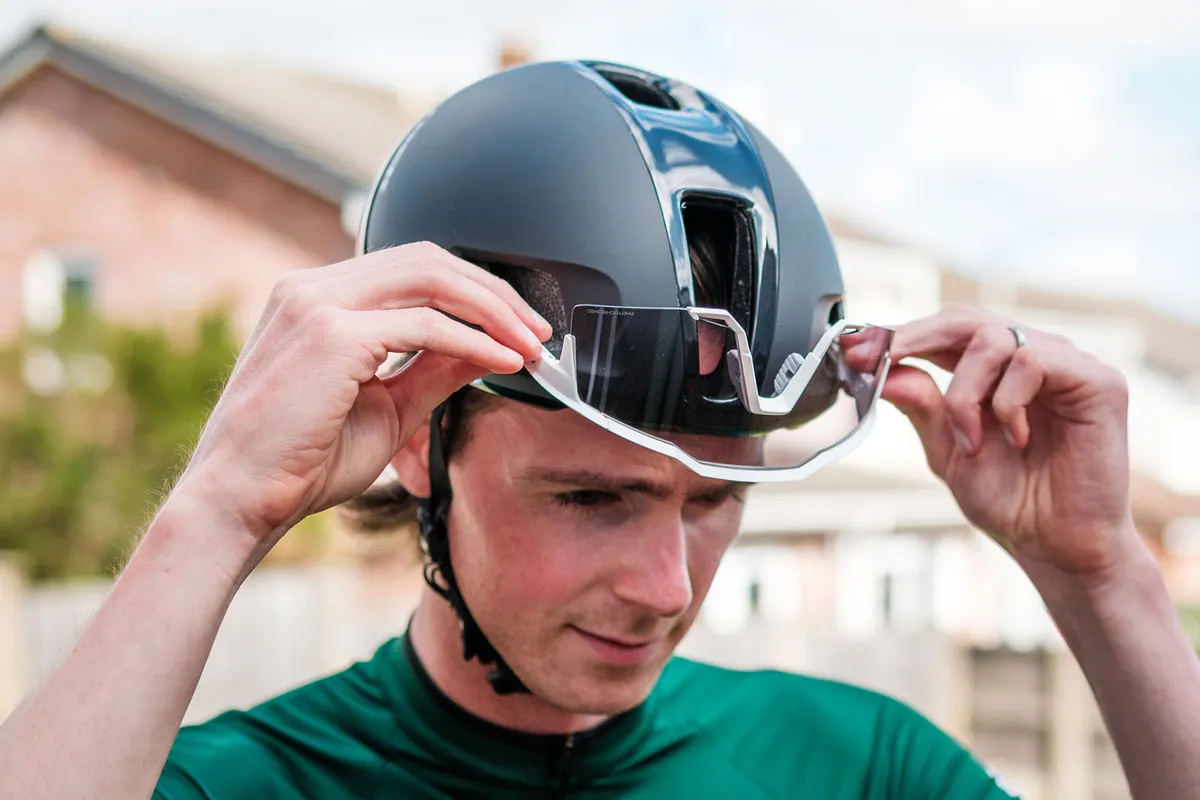
The two side vents on the front of the helmet also offer a secure place to store your sunglasses, which can be useful for increasing airflow over your face on hot climbs, or for when you’re having a post-ride coffee.
In terms of aesthetics, it’s more at the pure ‘aero helmet’ end of the spectrum, compared to slightly more ‘normal’-looking helmets such as the Specialized Evade 3 or Giro Eclipse Spherical.

Personally, I think the Ballista looks fine head-on, but the elongated tail can appear awkward unless you’re tucked down in an aerodynamic riding position.
It’s fair to say beauty is in the eye of the beholder, though.
Trek Ballista MIPS helmet bottom line
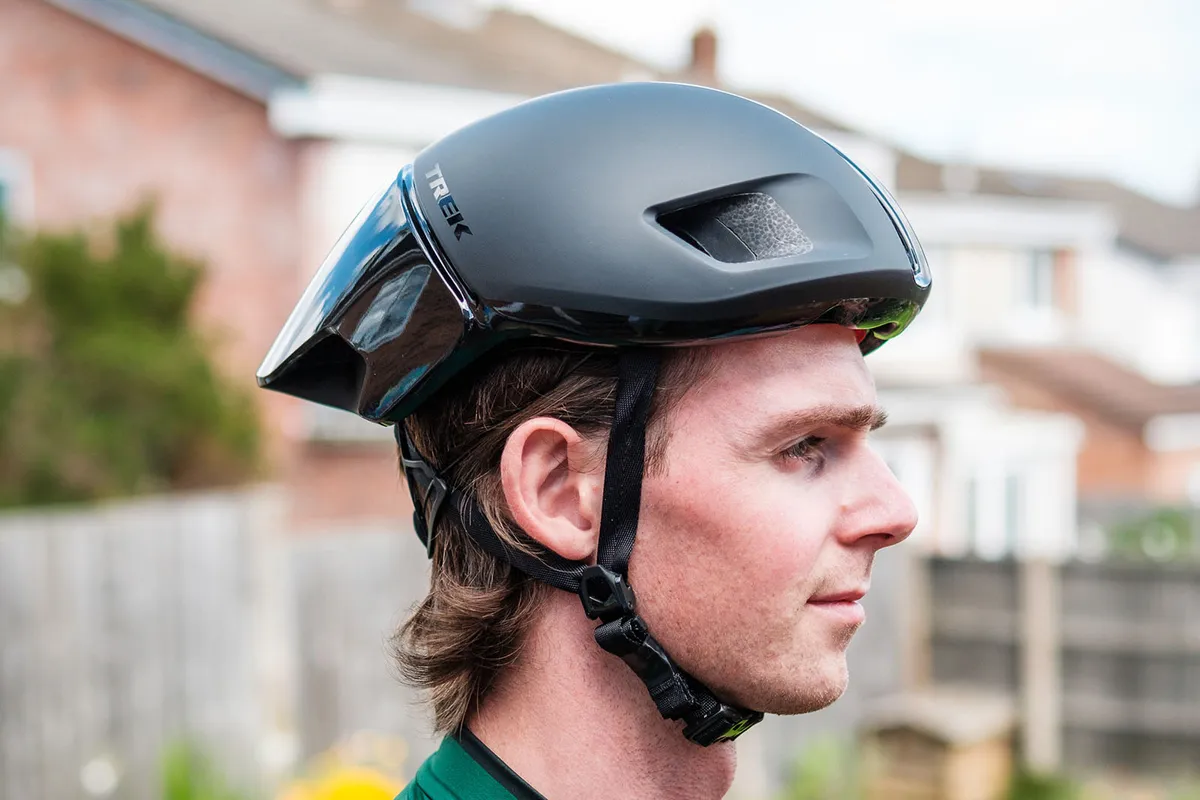
Trek may not be one of the first names that springs to mind when road cyclists think of top helmet manufacturers, but the new Ballista shows it should be.
As far as aero helmets go, it ticks all the right boxes, with an optimised shape, a comfortable fit, a competitive weight and excellent safety credentials.
Ventilation is good too, if not spectacular. It wouldn’t be a helmet I’d instinctively reach for on the hottest days, but otherwise I had no issues.
In the UK, it’s a bit cheaper than some of its direct rivals, too, although that advantage isn’t present in every territory.
Product
| Brand | Trek |
| Price | A$300.00, €300.00, £230.00, $300.00 |
| Weight | 268g |
Features
| MIPS | yes |
| Helmet type | aero_road |
| Features | Available sizes: S (51-57cm), M (54-60cm), L (58-63cm) Closure: BOA Colours options: Black; White; The USA also offers Purple and White/Nautical Navy |
